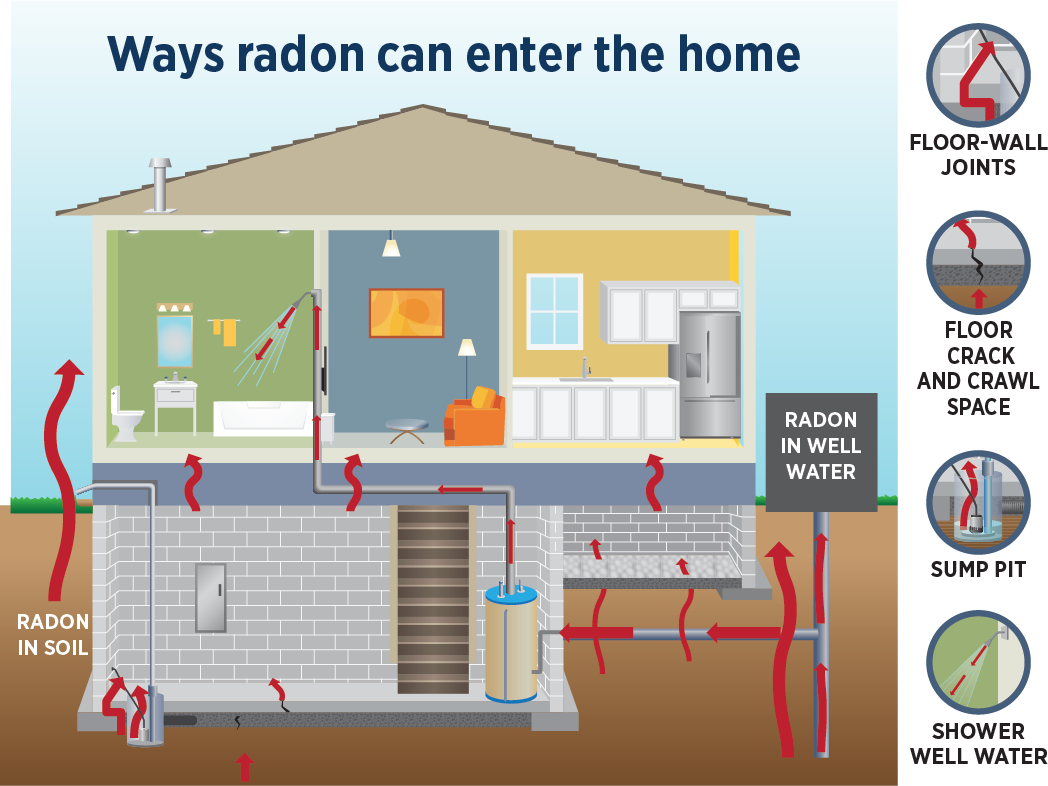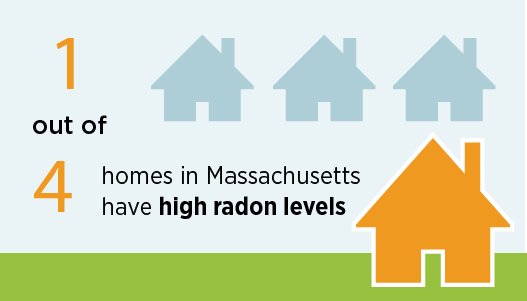Radon Lessons: What Watras Taught Us |
-
 Reducing the Risk from Radon: Information and Interventions A Guide for Health Care Providers. Publication No. E-18-2.
Reducing the Risk from Radon: Information and Interventions A Guide for Health Care Providers. Publication No. E-18-2.
Radon is a radioactive gas that comes naturally from soil and rocks. It moves through the ground and may enter the home through cracks in basement floors, wall joints, and well water. Long-term exposure to radon can cause lung cancer. For many years, radon was only considered a problem for people who worked in mines. Our understanding of radon changed in the 1980s after the discovery of radon in the home of Stanley Watras.
Stanley Watras was an engineer at a nuclear power plant being constructed in eastern Pennsylvania. At the time, exposure to radiation from the plant was not possible because no radioactive sources were on the building site. Yet when Watras would enter or leave the plant, radiation alarms would go off, sensing high radiation levels on Watras.
The Pennsylvania Public Health Department and the United States Environmental Protection Agency (EPA) teamed up to look into this very unusual case. They discovered high levels of radon in Watras' home. The radon was coming from rocks under his home that contained large amounts of uranium. Uranium was breaking down into radon, entering his home, and accumulating indoors at very high levels.

Scientists looked for radon in other homes in Watras' neighborhood. Although the average radon level in Watras’ home was very high — over 2,500 picocuries per liter (pCi/L) — some of his neighbors had much lower levels. Scientists found that radon levels can be very different in houses that are right next to each other.
Two years after discovering radon in Watras' home, the EPA set an action level 4 pCi/L for radon in indoor air. In homes with a radon level greater than 4 pCi/L, homeowners should act to lower the level. The EPA also recommends action to lower radon levels if your home’s radon level is between 2 and 4 pCi/L. The lower the radon level, the lower the risk of developing lung cancer. You can fix a radon problem by contacting a certified radon mitigator who can install a radon fan mitigation system under your home that draws radon away from your home.
Radon can cause lung cancer.
Protect your family.
- Test your home with a radon test kit. It's easy and inexpensive.
- Fix your house if it has a high radon level.
MA Radon Hotline: (800) 723-6695
The EPA estimates that there are 628 radon-related cases of lung cancer in Massachusetts every year. Radon is the second leading cause of lung cancer after tobacco use. While radon is the leading cause of lung cancer among non-smokers, the risk of lung cancer from radon exposure is much greater for people who smoke.
You cannot see, taste, or smell radon, so the only way to know the radon level in your home is to test for it. You can learn about testing your home for radon by:
- Reading fact sheets on www.mass.gov/resource/radon-in-massachusetts or
- Calling the Massachusetts Radon Hotline at (800) 723-6695.
Testing for radon is easy, so don’t put off testing your home.
